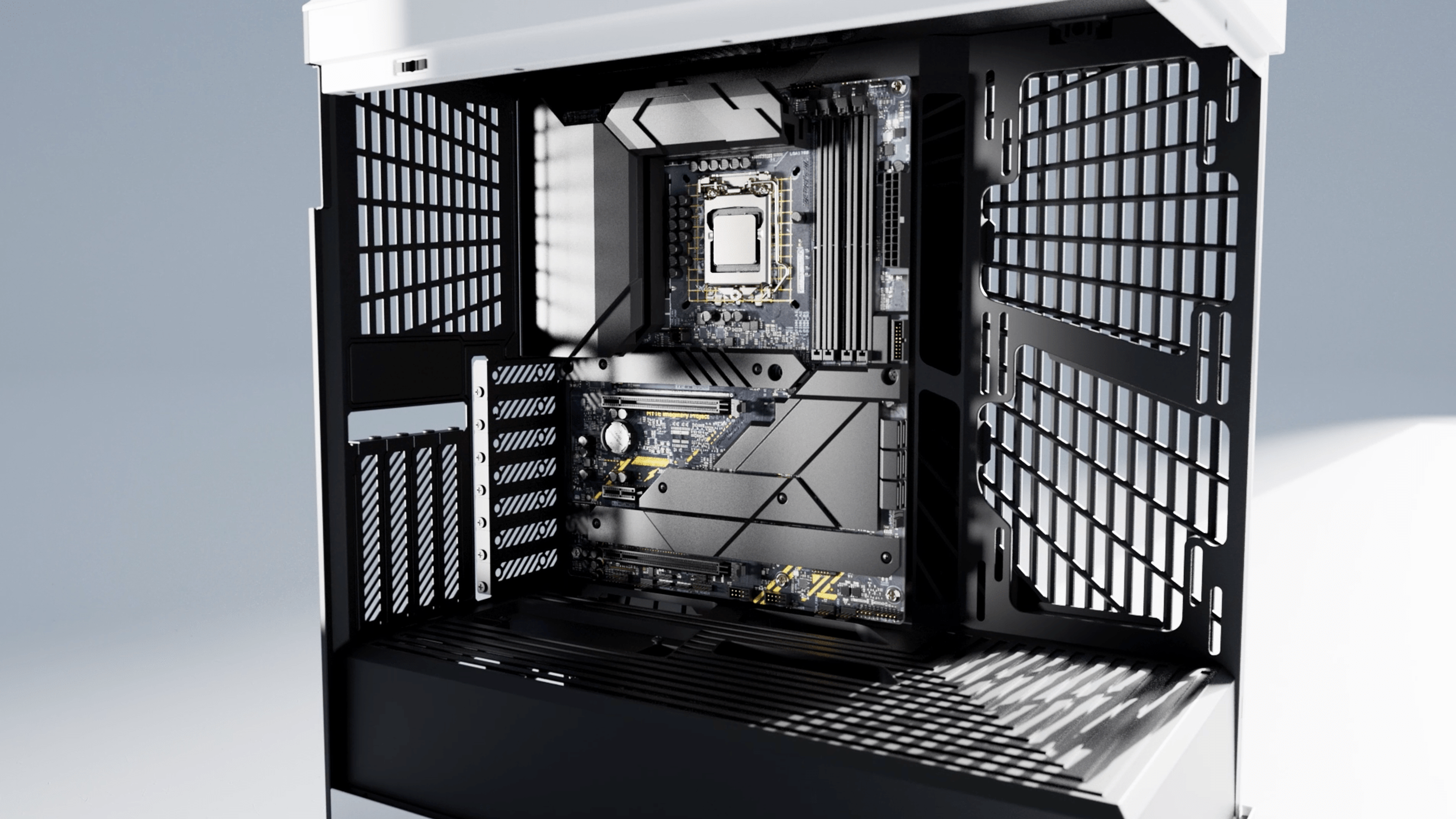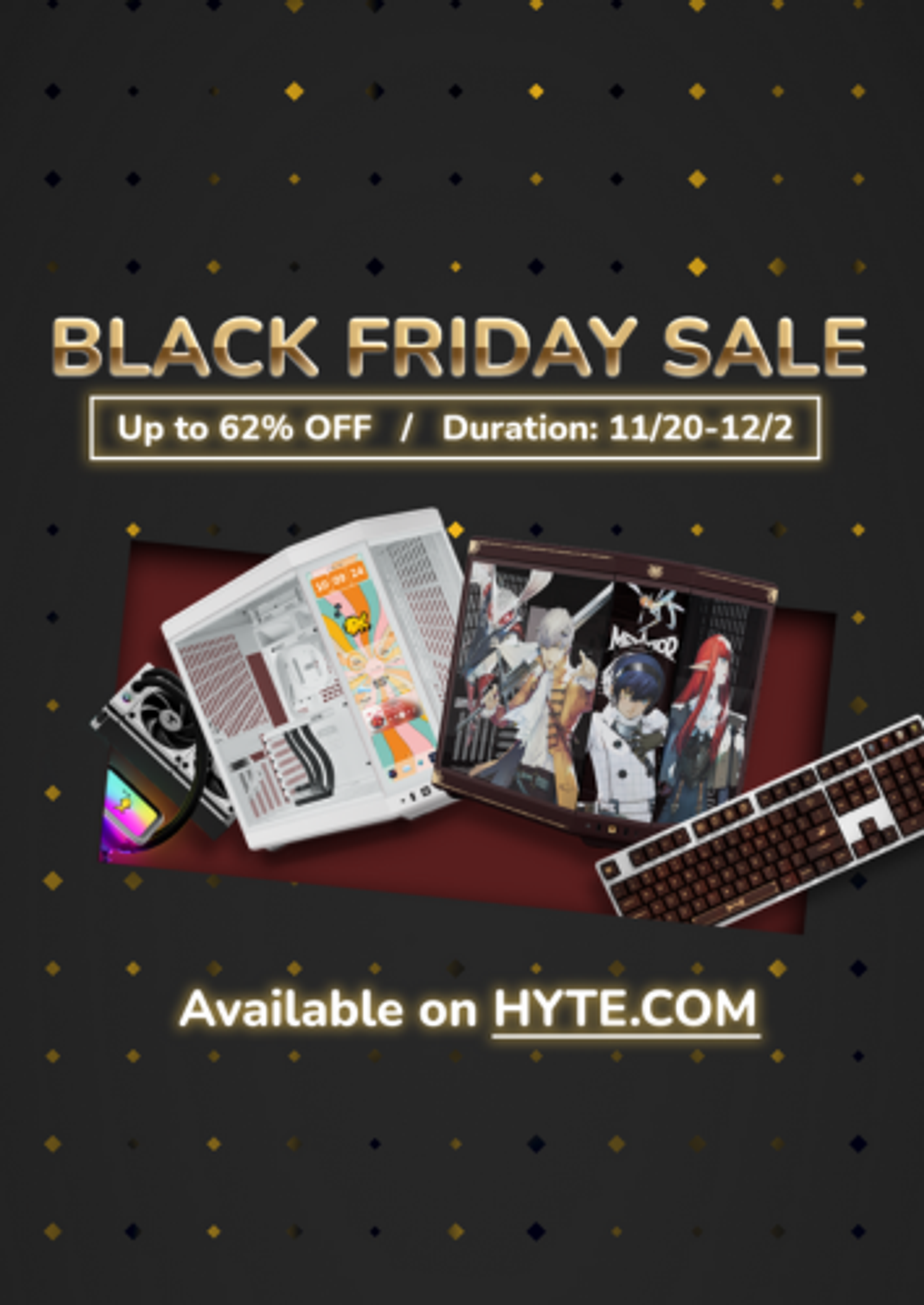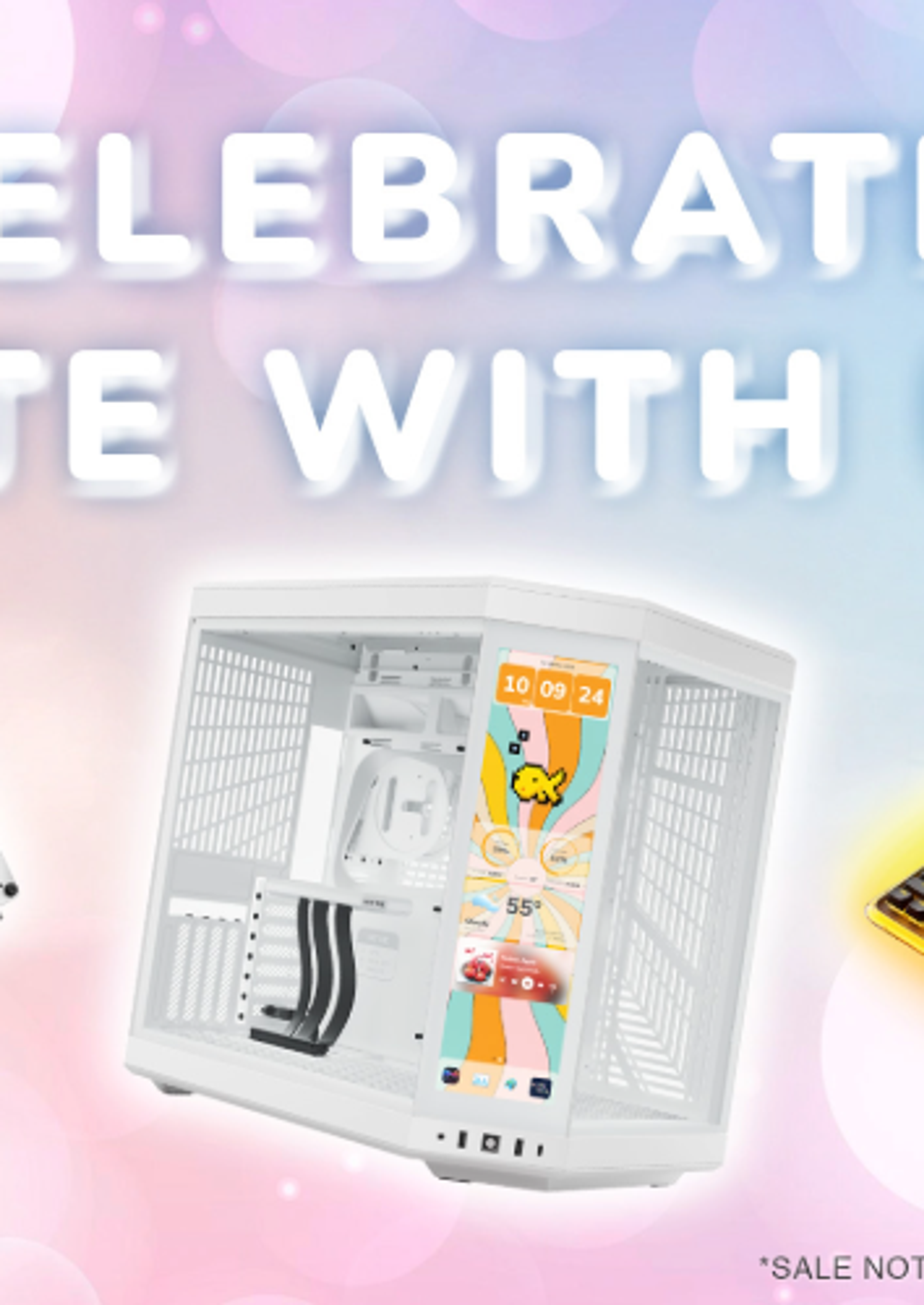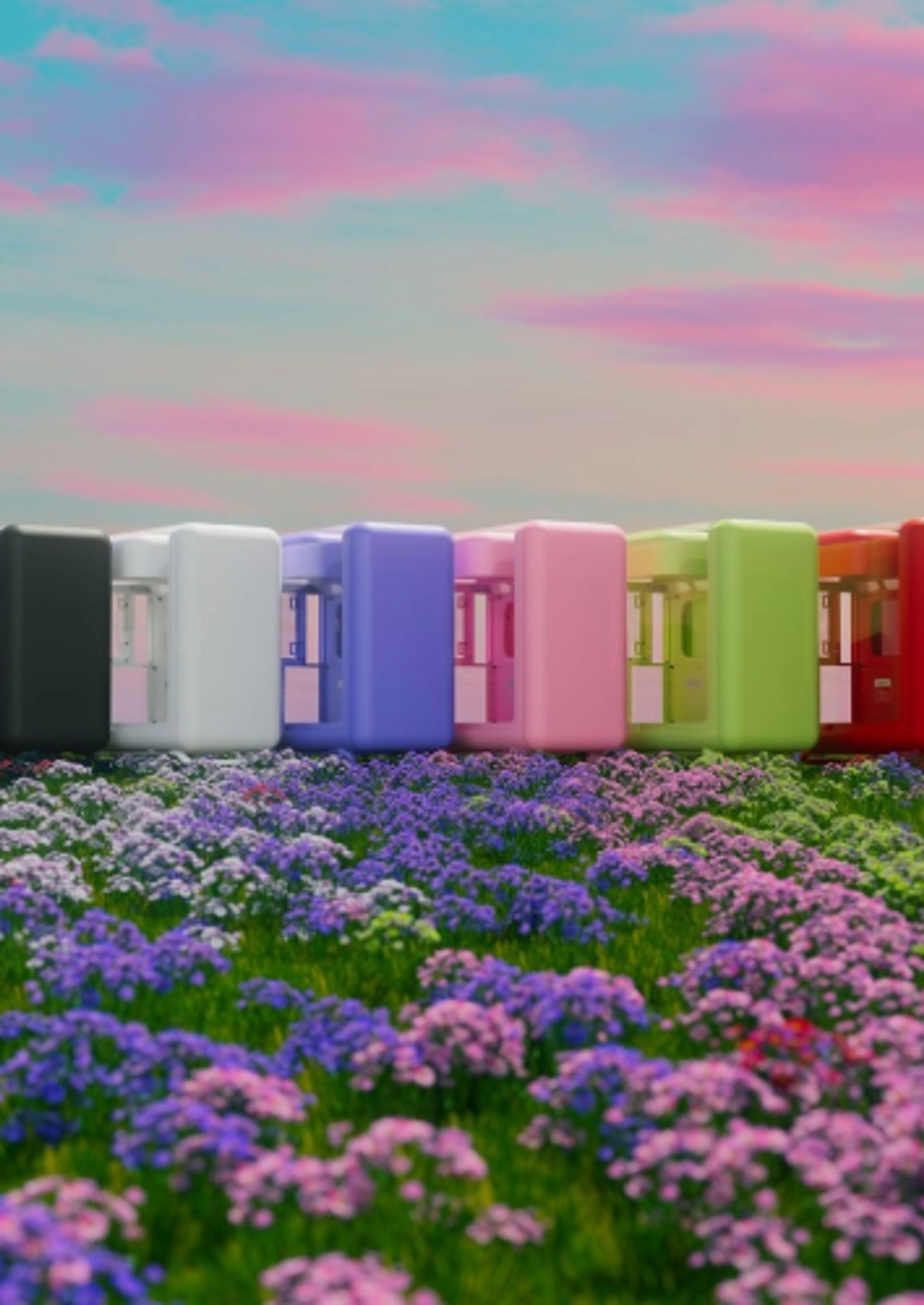
How To Pick a PC Case: Best PC Cases For Your Needs
Choosing the perfect PC case for any build is a tough decision, no matter if it’s someone’s first build or they’re a seasoned computer builder. Like the other components in a PC build, there are so many choices. With the case market growing by the day, it can get pretty confusing. For anyone just starting with PC building, here’s a PC case guide to pick the perfect PC case for any build.
If you’re new to building a PC, learn more about what components you need for your build.
How To Choose A PC Case: Features To Look For
PC case designs have strayed quite a bit from the simple black boxes of the past. Since it’s the first thing you see, many have taken it to new heights in aesthetics and performance. So, how do you sift through this madness? These PC case tips will focus on five features to consider when choosing a PC case:
Case Size
The very first thing to consider is the case size. This is the most important because it controls what parts can fit inside. Think about how much desk or room space is available for the PC while making this decision. Once it is known how much room there is for a computer, it’s time to choose the case type. The four computer case types are Mini-ITX (Small Form Factor), Micro-ATX (Mini Tower), ATX (Mid Tower), and EATX (Full Tower).
Small Form Factor (SFF), or Mini-ITX
Mini-ITX cases offer a compact and stylish solution for those who want to build a small form factor PC. Although a niche market, small form factor cases have risen in popularity. PC enthusiasts and casuals alike have fallen for its unique sizing as it's space-saving and portable. Mini-ITX cases are about half the size of standard ATX cases, providing a significantly smaller footprint.
Many mini-ITX builds pack quite a punch, holding up very well for gaming and content creation. Remember that mini-ITX cases require specific components due to their compact size. Some mini-ITX cases may not support full-length graphics cards, so check the maximum GPU length before purchasing. Due to its size, other potential limitations of the mini-ITX include thermal management, hardware compatibility, and limited expansion options. Anyone who needs a smaller case for their build or is looking for a portable option will love the mini ITX case, especially the Revolt 3.
Mini Tower, or MicroATX
Micro-ATX cases provide a balanced compromise between the compactness of mini-ITX cases and the larger mid-tower options. They’re perfectly sized for easy placement on the desktop or floor and balance space efficiency and component compatibility.
Many budget PCs are made of mini towers due to their price point and support for many standard components. Unlike SFF cases, you don’t have to pay the premium for smaller parts like SFX power supplies and low-profile cooling solutions. Micro-ATX cases are designed to accommodate Micro-ATX motherboards, essentially smaller versions of standard ATX boards. While they have fewer RAM and PCIe slots than ATX, they provide more expansion options than mini-ITX boards, making them perfect for users wanting a balance between compactness and expandability.
Mid Tower, or ATX
Mid towers are the standard and most common PC case size in gaming and office environments, accommodating a broad range of motherboards. Especially for gamers, ATX PC cases are quite popular due to their ability to support two graphics cards, closed-loop (AIO coolers), more drive bays, and ample space for cable management. These cases stand a little under 20 inches tall, balancing size and expandability, comfortably housing standard ATX motherboards, with some models offering compatibility with larger E-ATX motherboards.
Despite being smaller than full-tower cases, mid-tower PCs have enough space for most closed-loop CPU coolers. This extra space allows efficient cooling for high-performance systems without needing custom liquid cooling solutions. Mid-tower cases are also designed to be versatile enough for future upgrades.
Whether for gaming PCs, workstations, or general-purpose use, ATX cases such as the HYTE Y40 provide a solid foundation for a wide range of computing needs.
Full Tower, or EATX
Full-tower cases, characterized by their massive size, are over 20 inches tall and surpass mid-tower cases in length and depth. This case sizing has a dedicated fan base because of its ability to hold an Extended-ATX motherboard, as well as for its bold sizing, cable management ease, and power. Full towers accommodate high-end enthusiast builds, easily fitting graphics cards like the RTX 4090, and custom loop cooling systems. Most commonly, they can house even the largest E-ATX motherboards, offering an expansive canvas for hardware configurations. Recommended for those requiring 360mm radiators, extra fans, and more expansion slots, full-tower cases cater to the needs of users with high-performance demands.
For most users, though, a mid-tower case is more than sufficient, as it provides a common and practical size. Full towers are commonly used for servers since it’s the only sizing accommodating to server motherboards. Hardcore gamers like full-tower PCs as they can house absolute monster PCs.
Cable Management
Finishing the build with proper cable management is vital, making future maintenance, troubleshooting, and upgrades much easier. For those who are particularly meticulous about the appearance of their system and prioritize clean aesthetics, opting for a case designed with cable management in mind is essential. A well-managed cable system not only enhances the overall look of the build but also contributes to efficient airflow within the case.
Cable management is crucial for individuals to create a clean-looking system. Even if components are color-coordinated, equipped with RGB lighting, and housed in a case with a tempered glass side panel, messy cabling can detract from the overall visual appeal. While cable management is somewhat of an art, having a case with ample cable management options significantly aids in hiding cables efficiently. This consideration is vital for first-time builders who are more focused on assembling their computers correctly than on cable management intricacies.
What are some telltale signs of a case with well-thought-out cable management support? One huge sign is the case having plenty of space either behind the rear side panel or towards the bottom of the case (power supply shroud). Cases with cable routing holes or rubber grommets are good indicators of cable management ease. Some cases even provide velcro straps or zip ties, which are helpful throughout the process.

Cooling
Proper case cooling is essential for maintaining PC components' optimal performance, stability, and longevity. Especially for those planning on building a high-performance system, finding a case that will efficiently dissipate and ventilate all the heat your components generate is essential. There’s a bit more that goes into cooling than just the fans. Here are five key aspects of case cooling you should keep in mind:
- Airflow design
The PC case's ability to accommodate multiple fans at various locations (front, back, top, side, etc.) is critical. Even if there are only a few pre-installed fans, choosing one with the option to add multiple fans enhances cooling efficiency. Cases with grilled or mesh panels promote better airflow than solid ones, allowing for more efficient heat dissipation. - Fan support
The number and placement of fans within a PC case significantly impact airflow. Optimal airflow requires at least two fans, a front intake, and a rear outward-blowing fan. Some budget cases may include only one fan, affecting temperature and performance. Additional fan mounts, even if not initially populated, allow for future upgrades to improve cooling. - Thermals and Component Compatibility
Thermals impact overall computer performance, making it essential to consider cooling solutions for different components. CPU coolers, both traditional and water-cooling systems, require compatibility with case dimensions, especially in smaller form factors. A case accommodating the specific radiator size for AIO coolers is necessary for adequate cooling. - Water-Cooling Support
The popularity of liquid-cooling systems, especially sealed all-in-one coolers, has increased. The case's support for water cooling is crucial, with different cases accommodating varying radiator sizes. Mid-tower cases may support up to 240mm radiators, while full-tower cases are often required for larger 360mm radiators. Some cases even allocate dedicated space for liquid-cooling reservoirs in custom loop setups. - Material and construction
Cases with features like large cut-outs in the motherboard tray make replacing the CPU or CPU cooler easier without removing the entire motherboard, providing added convenience for users. Choosing a case with thoughtful cooling features contributes to system performance and the longevity of components.
Compatibility and Clearance
Choosing a fully compatible case with the parts necessary to build it is also crucial. This part will be easier for those who know what hardware they want to include. Take note of the hardware’s dimensions to ensure they fit correctly in the case. Some key information to look out for includes:
1. Maximum CPU cooler height
Air CPU coolers come in various sizes, with some featuring taller heatsinks. Not all cases are deep enough to accommodate the tallest air coolers. Checking the spec sheets of the case and the chosen air CPU cooler is necessary to determine compatibility. The case's specifications typically indicate the maximum CPU cooler height it can accommodate, allowing users to ensure a proper fit.
2. Maximum graphics card length
High-end graphics cards often boast longer dimensions, potentially causing clearance issues in smaller cases. While modern mid-tower and compact cases are increasingly designed to accommodate longer graphics cards, it remains a consideration, especially for users opting for flagship GPUs like the RTX 4090 or RX 7900 XTX. Checking the case and graphics card spec sheets verifies there’s sufficient clearance. If the case can accommodate lengths exceeding the graphics card, it is compatible; otherwise, users may need to opt for a shorter alternative or consider low-profile graphics cards for small form-factor cases.
3. Maximum PSU length
When browsing case specifications, maximum PSU depths are often listed in millimeters (mm), while PSU dimensions are typically provided in inches. While power supplies generally adhere to a standard size, the variation in length can pose compatibility challenges. Most cases can accommodate a wide range of power supplies, but check for any length restrictions, particularly in smaller cases. In cases with a length limit, exceeding it with an oversized PSU may lead to installation issues and compromise the overall build. Taking measurements and confirming compatibility ensures a snug fit for the power supply and contributes to the PC build's overall efficiency and aesthetics.
4. Vertical GPU Mount
Many modern cases offer the option to mount the GPU for a display effect vertically. However, this feature often requires a special bracket and a high-quality PCIe riser cable. Users should check the case's compatibility with vertical GPU mounting and ensure they have the necessary accessories for proper installation. Some PCIe 4.0 graphics cards may also require specific cables for compatibility with the latest GPUs.
5. Fan/Radiator installation clearance
Liquid cooling systems, including All-In-One (AIO) coolers and custom loops, use radiators to dissipate heat. Radiators come in various sizes; only some cases can accommodate every radiator size. Checking the case's spec sheet is vital to confirm that the selected liquid cooling setup's radiator will fit. Custom liquid cooling setups, which may require additional reservoir space, have specific compatibility considerations beyond radiator size. AIO coolers and custom loops are not universally interchangeable regarding case compatibility.
Aesthetics
The PC case is the first thing you see before looking closer at the specs. The importance of aesthetics in choosing a PC case extends beyond appearance, as it impacts the overall experience of building and owning a custom computer. Take that opportunity to make your PC build a true reflection of who you are. Many custom PC cases, like the HYTE Y60, are meant to showcase your unique style and personality. Whether it’s getting a case with see-through side panels, PSU shrouds, or adding lighting such as RGB or Integrated lighting. A visually appealing case enhances the user experience, turning the computer into a personalized and aesthetically pleasing technology.
Additional Tips When Looking for a PC Case
Remember, the joy of creating a personalized, high-performance rig goes hand in hand with the delight of having a visually stunning PC. Choose a case that accommodates the necessary hardware and resonates with your aesthetic sensibilities. If you know you’re only building a simple PC for browsing and light gaming, you might not want to purchase a full tower case with eight fans. Remember: The perfect PC case will fulfill and house the PC that fits your needs. You’re now better informed on how to pick a PC case and can choose to customize one of the many cases available at HYTE today.
Featured Posts

Black Friday Gaming Gear & PC Deals 2025
HYTE Black Friday sales are here, and we’re excited to share the amazing deals we’ll be offering this year! Our Black Friday sales event is your chance to save big on some of our most popular products. From November 20th through December 2nd, enjoy incredible discounts on PC cases and gaming accessories that bring both performance and style to your setup. If you’re looking to upgrade, now’s the perfect time to do it with HYTE.

Official HYTE x Honkai: Star Rail Firefly Collection!
The stars have aligned, and the Official HYTE x Honkai: Star Rail Firefly Collection is ready for launch.

HYTE's 4th Anniversary Sale!
We’ve come a long way, and it’s all thanks to you! To celebrate HYTE’s anniversary, we’re giving back with a limited-time Anniversary Sale from Oct. 5 to Oct. 7.

HYTE X50 & X50 Air Pre-Orders Are Now Live!
The X50 redefines typical PC cases with a unique curved design and performance-driven elements. Pre-order the X50 and X50 Air NOW!
